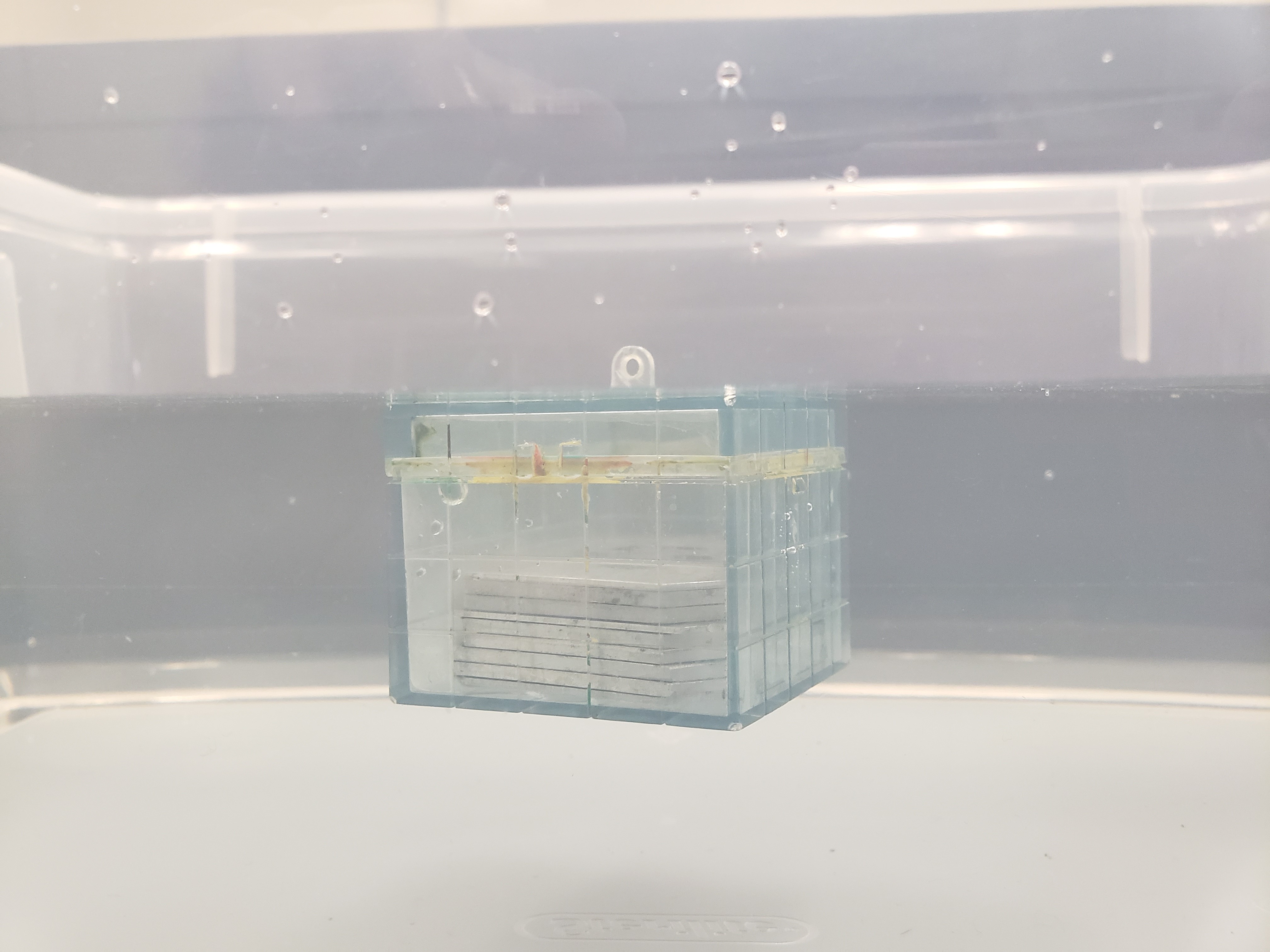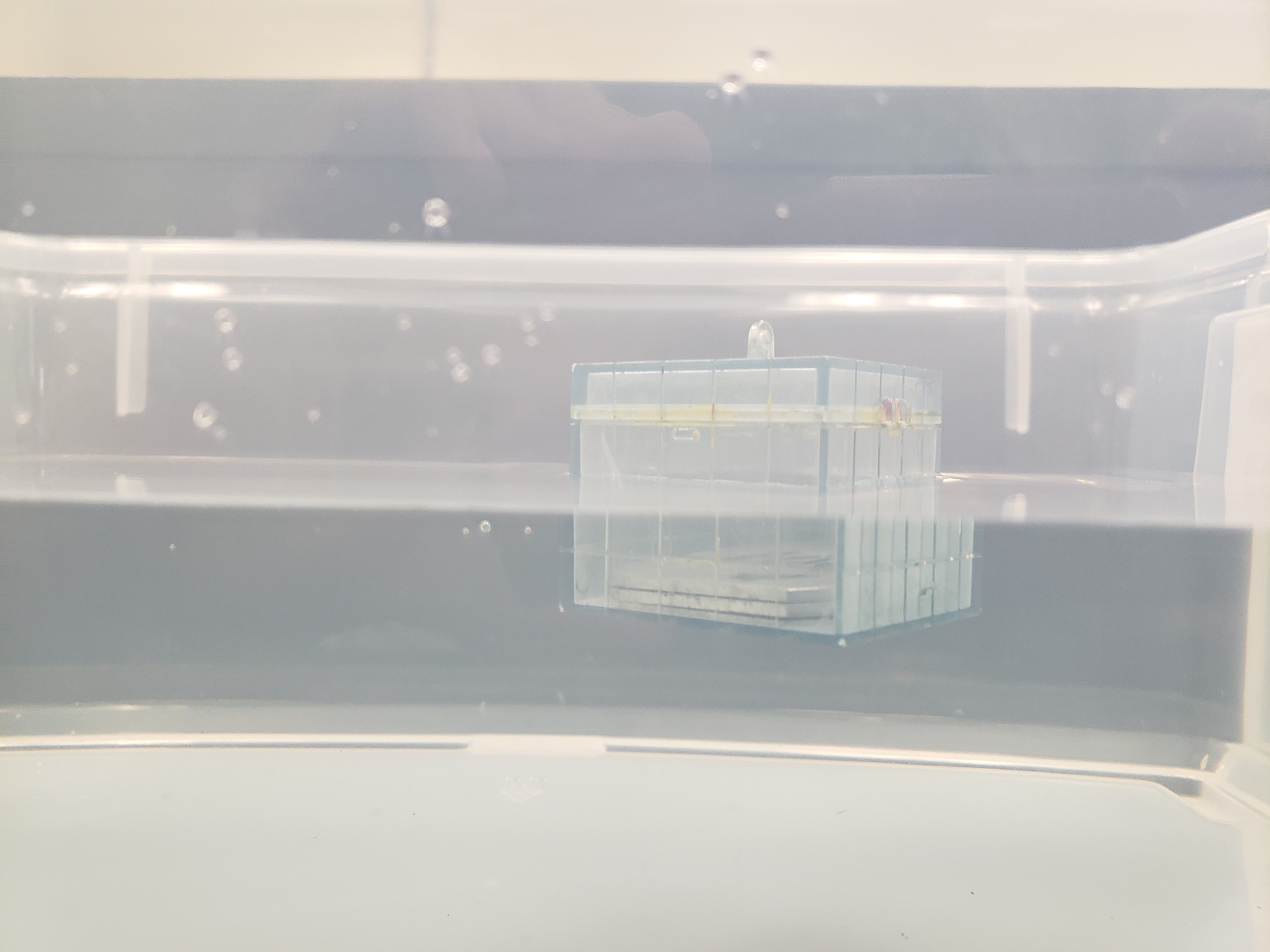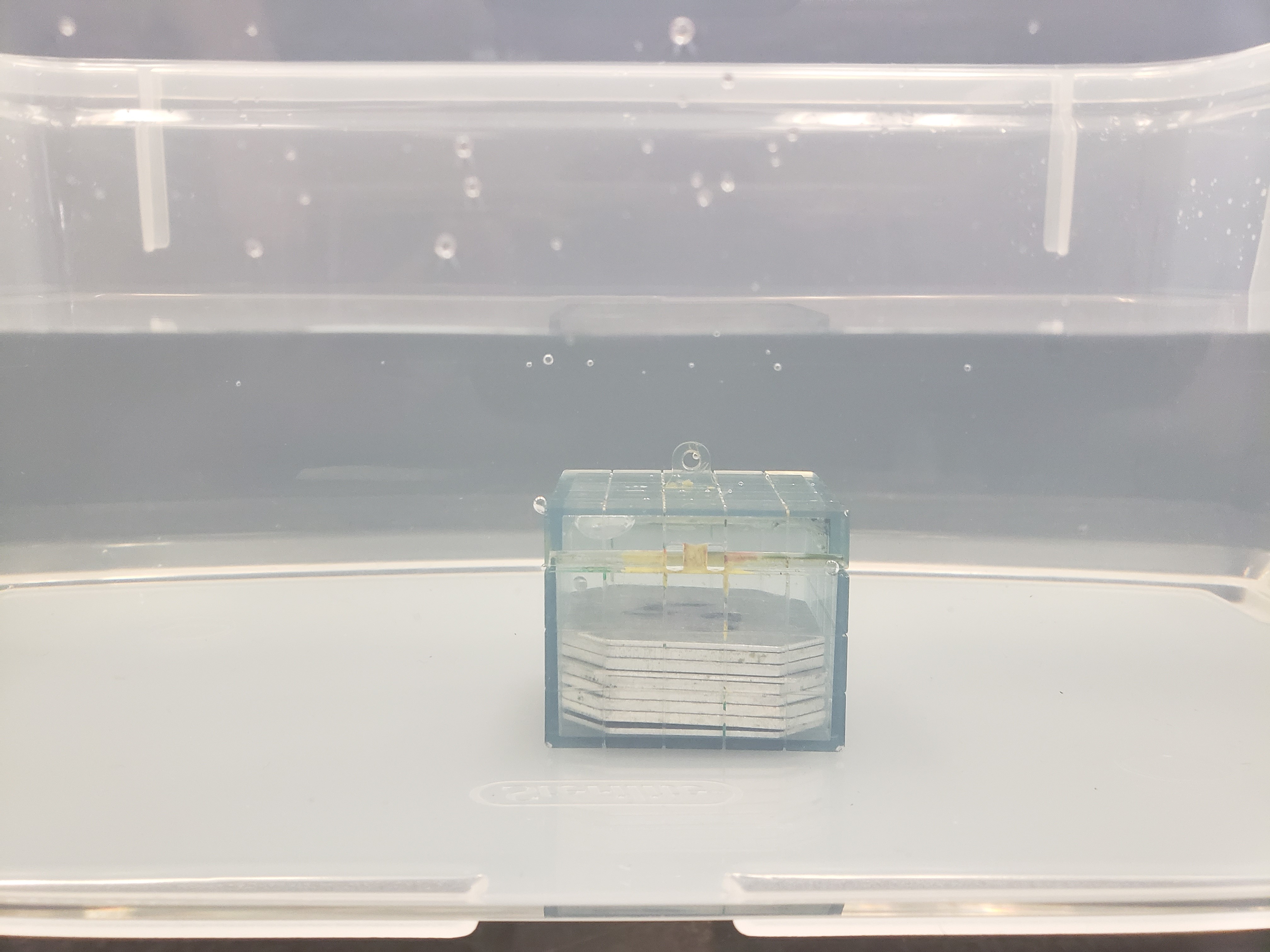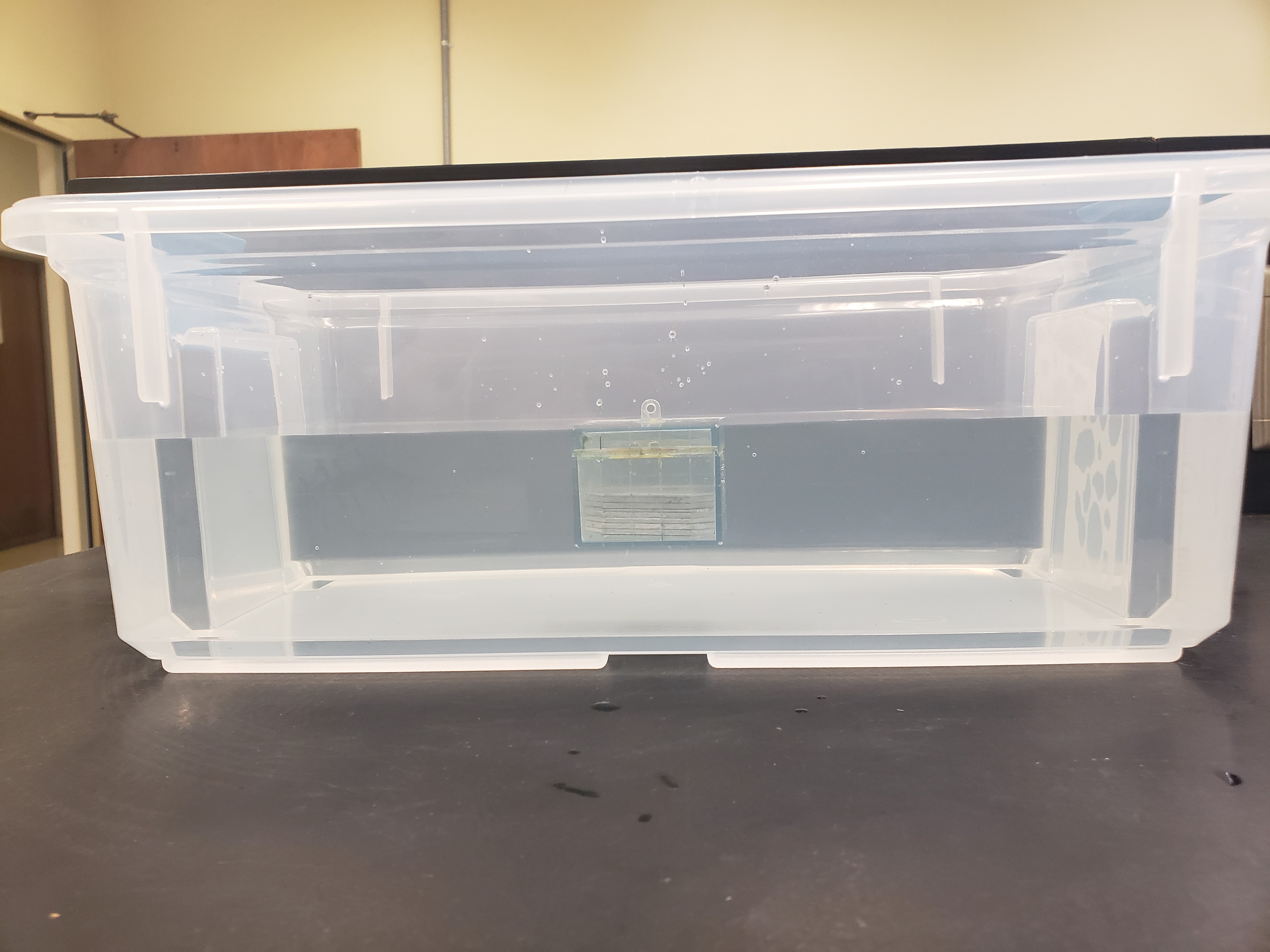Overview
Students use Archimedes Blocks floating in a container of water to create visual representations of fractions. As the blocks are filled with more mass, they sink further into the water, changing the fraction of the block that is submerged. Students compare their observations of the blocks with numerical calculations of the density, connecting to the visual representation of the fraction and discovering patterns in the data.
- Grades 4-8
- In person and virtual options
- Access to a water supply is required
Students use Archimedes Blocks floating in a container of water to create visual representations of fractions. As the blocks are filled with more mass, they sink further into the water, changing the fraction of the block that is submerged. Students compare their observations of the blocks with numerical calculations of the density, connecting to the visual representation of the fraction and discovering patterns in the data.
- Grades 4-8
- In person and virtual options
- Access to a water supply is required
Materials
-
Archimedes Blocks and weights
-
Container to hold water (preferably shoe box size)
-
Archimedes Blocks and weights
-
Container to hold water (preferably shoe box size)
Follow Up and Resources
This can be an effective launch point to dig deeper into fractions and density. Check out the following:
-
Colorado Phet Fractions: Intro simulation.
-
Our investigation, Sea for Yourself, on fluid density and ocean currents.
-
PBS Simbucket Density Lab simulation.
This can be an effective launch point to dig deeper into fractions and density. Check out the following:
-
Colorado Phet Fractions: Intro simulation.
-
Our investigation, Sea for Yourself, on fluid density and ocean currents.
-
PBS Simbucket Density Lab simulation.
Standards
Number and Operations - Fractions
- MAFS.3.NF.1.3: Explain equivalence of fractions in special cases, and compare fractions by reasoning about their size.
- MAFS.4.NF.1.1: Explain why a fraction a/b is equivalent to a fraction (n x a)/(n x b) by using visual fraction models, with attention to how the number and size of the parts differ even though the two fractions themselves are the same size. Use this principle to recognize and generate equivalent fractions.
- MAFS.4.NF.1.2: Compare two fractions with different numerators and different denominators, e.g., by creating common denominators or numerators, or by comparing to a benchmark fraction such as 1/2. Recognize that comparisons are valid only when the two fractions refer to the same whole. Record the results of comparisons with symbols >, =, or <, and justify the conclusions, e.g., by using a visual fraction model.
- MAFS.6.RP.1.1: Understand the concept of a ratio and use ratio language to describe a ratio relationship between two quantities.
- MAFS.6.RP.1.3: Use ratio and rate reasoning to solve real-world and mathematical problems, e.g., by reasoning about tables of equivalent ratios, tape diagrams, double number line diagrams, or equations.
Properties of Matter
- SC.3.P.8.2: Measure and compare the mass and volume of solids and liquids.
- SC.4.P.8.1: Measure and compare objects and materials based on their physical properties including: mass, shape, volume, color, hardness, texture, odor, taste, attraction to magnets.
- SC.5.P.8.1: Compare and contrast the basic properties of solids, liquids, and gases, such as mass, volume, color, texture, and temperature.
- SC.8.P.8.3: Explore and describe the densities of various materials through measurement of their masses and volumes.
- SC.8.P.8.4: Classify and compare substances on the basis of characteristic physical properties that can be demonstrated or measured; for example, density, thermal or electrical conductivity, solubility, magnetic properties, melting and boiling points, and know that these properties are independent of the amount of the sample.
The Practice of Science
- SC.3.N.1.3: Keep records as appropriate, such as pictorial, written, or simple charts and graphs, of investigations conducted.
- SC.6.N.1.1/SC.7.N.1.1/SC.8.N.1.1: Define a problem from the sixth/seventh/eighth grade curriculum, use appropriate reference materials to support scientific understanding, plan and carry out scientific investigation of various types, such as systematic observations or experiments, identify variables, collect and organize data, interpret data in charts, tables, and graphics, analyze information, make predictions, and defend conclusions.
Number and Operations - Fractions
- MAFS.3.NF.1.3: Explain equivalence of fractions in special cases, and compare fractions by reasoning about their size.
- MAFS.4.NF.1.1: Explain why a fraction a/b is equivalent to a fraction (n x a)/(n x b) by using visual fraction models, with attention to how the number and size of the parts differ even though the two fractions themselves are the same size. Use this principle to recognize and generate equivalent fractions.
- MAFS.4.NF.1.2: Compare two fractions with different numerators and different denominators, e.g., by creating common denominators or numerators, or by comparing to a benchmark fraction such as 1/2. Recognize that comparisons are valid only when the two fractions refer to the same whole. Record the results of comparisons with symbols >, =, or <, and justify the conclusions, e.g., by using a visual fraction model.
- MAFS.6.RP.1.1: Understand the concept of a ratio and use ratio language to describe a ratio relationship between two quantities.
- MAFS.6.RP.1.3: Use ratio and rate reasoning to solve real-world and mathematical problems, e.g., by reasoning about tables of equivalent ratios, tape diagrams, double number line diagrams, or equations.
Properties of Matter
- SC.3.P.8.2: Measure and compare the mass and volume of solids and liquids.
- SC.4.P.8.1: Measure and compare objects and materials based on their physical properties including: mass, shape, volume, color, hardness, texture, odor, taste, attraction to magnets.
- SC.5.P.8.1: Compare and contrast the basic properties of solids, liquids, and gases, such as mass, volume, color, texture, and temperature.
- SC.8.P.8.3: Explore and describe the densities of various materials through measurement of their masses and volumes.
- SC.8.P.8.4: Classify and compare substances on the basis of characteristic physical properties that can be demonstrated or measured; for example, density, thermal or electrical conductivity, solubility, magnetic properties, melting and boiling points, and know that these properties are independent of the amount of the sample.
The Practice of Science
- SC.3.N.1.3: Keep records as appropriate, such as pictorial, written, or simple charts and graphs, of investigations conducted.
- SC.6.N.1.1/SC.7.N.1.1/SC.8.N.1.1: Define a problem from the sixth/seventh/eighth grade curriculum, use appropriate reference materials to support scientific understanding, plan and carry out scientific investigation of various types, such as systematic observations or experiments, identify variables, collect and organize data, interpret data in charts, tables, and graphics, analyze information, make predictions, and defend conclusions.






